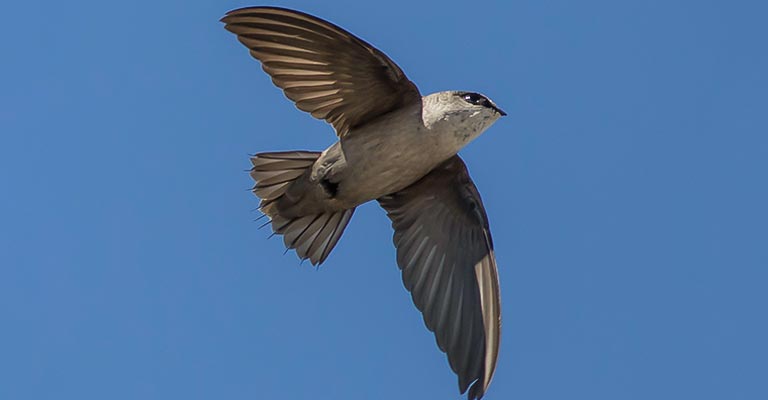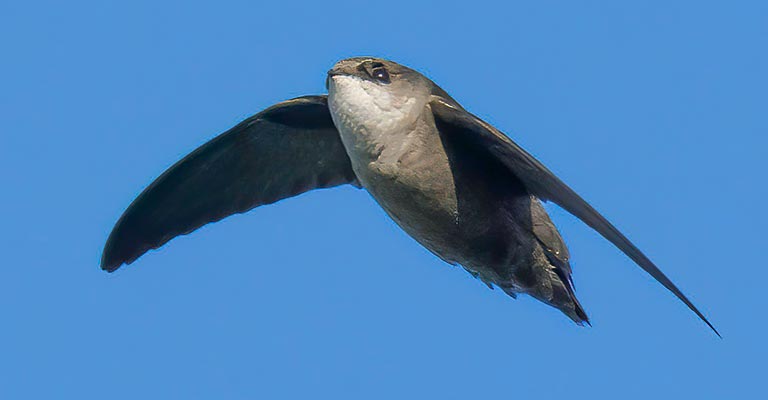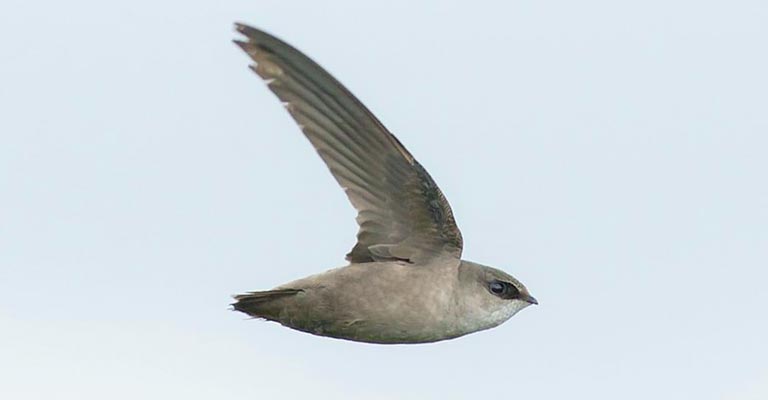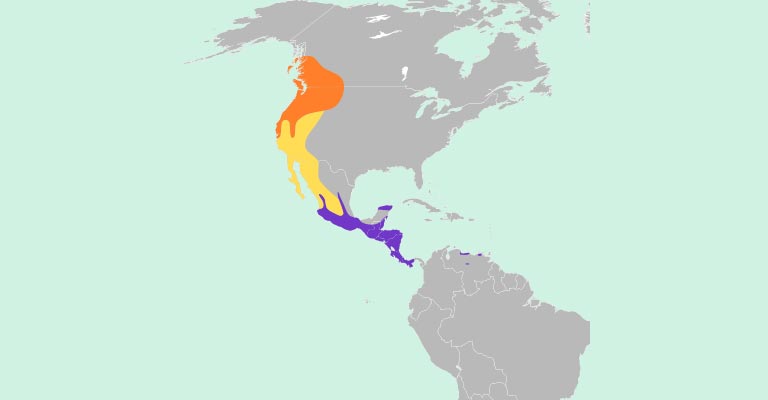Vaux’s Swift (Chaetura vauxi) is a remarkable bird species known for its agile flight, unique nesting habits, and fascinating behaviors.
These small, dark-colored birds are native to western North America and inhabit various forested habitats and urban areas.
Vaux’s Swifts construct their nests vertically, unlike many other bird species, often utilizing old-growth trees, chimneys, or air vents as nesting sites.
Their swift and acrobatic flight enables them to catch flying insects with incredible precision, making them efficient aerial predators.
Despite their widespread distribution, Vaux’s Swifts face habitat loss and degradation threats, emphasizing the importance of conservation efforts to protect their nesting sites and natural habitats.
Understanding the biology and ecology of Vaux’s Swifts is essential for ensuring their long-term survival in the face of environmental challenges. Stay focused.
Identifying Criteria of Vaux’s Swift

Identifying Vaux’s Swift (Chaetura vauxi) can be rewarding for birdwatchers and enthusiasts.
These small, agile birds possess distinct characteristics that set them apart from other swift species. Here are some of the key points to help identify Vaux’s Swift:
Size and Shape
Vaux’s Swifts are relatively small birds, measuring around 4.5 to 5.5 inches (11 to 14 cm) in length with a wingspan of approximately 12 inches (30 cm).
They have a slender, cigar-shaped body with long, narrow wings and a short, squared-off tail. This body structure allows them to maneuver swiftly and adeptly through the air.
Coloration
Vaux’s Swifts have a predominantly dark plumage, appearing glossy blackish-brown overall.
However, their plumage may appear slightly iridescent under certain lighting conditions, showing hints of purplish or greenish sheen. They lack distinct markings or patterns on their bodies.
Flight Pattern
One of the most characteristic features of Vaux’s Swifts is their flight pattern.
They are swift and agile flyers, darting and swooping rapidly through the air. Their flight is often erratic, with rapid wingbeats interspersed with gliding and hovering.
Vocalizations
While not always easily heard, Vaux’s Swifts produce high-pitched, chattering calls while in flight or when perched.
These vocalizations are typically short and rapid, resembling a series of sharp twittering or chirping sounds. Listening to these calls can aid in locating and identifying these birds.
Habitat
Vaux’s Swifts are primarily found in western North America, particularly along the Pacific coast and mountainous regions.
They inhabit various forested habitats, including coniferous and mixed forests, and urban areas with suitable nesting sites such as old chimneys or hollow trees.
Nesting Behavior
Unlike other swift species that build their nests on cliffs or cave walls, Vaux’s Swifts are known for their affinity for artificial structures.
They frequently nest in old-growth forests but have adapted to urban environments by utilizing chimneys, air vents, or other vertical structures for nesting purposes.
Observing swifts entering or exiting these structures can help confirm their presence.
Social Behavior
Vaux’s Swifts are highly social birds often observed in flocks, especially during migration and foraging.
They may form large swirling groups in the sky, particularly during the breeding season when they gather to perform aerial courtship displays.
Range and Migration
Understanding Vaux’s Swifts’ range and migration patterns is crucial for identification.
While they breed primarily in western North America, they undertake extensive migrations to Central and South America during winter.
Observing them during migration can provide valuable insights into their identification and behavior.
Identifying Vaux’s Swifts requires attention to their size, shape, coloration, flight pattern, vocalizations, habitat preferences, nesting behavior, social tendencies, and range.
By considering these key points and honing one’s observation skills, birdwatchers can confidently identify these fascinating birds in the wild.
Taxonomy of Vaux’s Swift

Here’s a table summarizing the taxonomy details of Vaux’s Swift based on the provided information:
| Taxonomic Level | Classification |
| Domain | Eukaryota |
| Kingdom | Animalia |
| Phylum | Chordata |
| Class | Aves |
| Clade | Strisores |
| Order | Apodiformes |
| Family | Apodidae |
| Genus | Chaetura |
| Species | C. vauxi |
The Vaux’s Swift, scientifically known as Chaetura vauxi, is a bird species with several recognized subspecies, each inhabiting distinct regions across North and Central America. Here’s a brief overview of these subspecies:
- Chaetura vauxi aphanes: Found in northern Venezuela, this subspecies of Vaux’s Swift thrives in the tropical habitats of the region, exhibiting adaptations to its specific ecological niche.
- Chaetura vauxi gaumeri: Inhabiting the Yucatán Peninsula and Cozumel Island in Mexico, Chaetura vauxi gaumeri is distinguished by its presence in these unique and diverse ecosystems.
- Chaetura vauxi ochropygia: This subspecies is native to eastern Panama, where it likely experiences different environmental pressures and ecological interactions compared to its counterparts in other regions.
- Chaetura vau xi Richmond: From southern Mexico to Costa Rica, Chaetura vau xi Richmond occupies a significant portion of Central America, contributing to the region’s avian biodiversity.
- Chaetura vau xi warner: Western Mexico is home to Chaetura vau xi warner, which plays a role in local ecosystems and contributes to the region’s biological diversity.
- Chaetura vauxi tamaulipensis: This subspecies is found in eastern Mexico, likely facing distinct environmental challenges and adaptations compared to its relatives in other parts of the species’ range.
- Chaetura vauxi vauxi: The nominate subspecies, Chaetura vauxi vauxi, ranges from western Canada to the southwestern USA, where it is a familiar sight in the skies of these regions.
Each subspecies of Vaux’s Swift contributes to the species’ overall genetic diversity and ecological dynamics across its range.
Studying these subspecies provides valuable insights into Vaux’s Swifts’ evolutionary history, population dynamics, and conservation needs.
Hunting Habit of Vaux’s Swift
Vaux’s Swifts are adept aerial hunters, relying on their remarkable agility and speed to catch prey on the wing. They primarily feed on flying insects, including flies, mosquitoes, and other small airborne insects.
Their hunting strategy involves swift, acrobatic flights as they dart and maneuver through the air, often in groups, to intercept prey.
Using their long, slender wings and streamlined bodies, they perform intricate aerial maneuvers, including sharp turns and sudden dives, to capture insects in mid-flight.
Vaux’s Swifts are highly efficient hunters, able to cover large areas in search of prey while maintaining impressive aerial control.
Their hunting habits are closely tied to their swift and agile flight capabilities, allowing them to thrive in their forested and urban habitats where insects are abundant.
Vaux’s Swift Life History

Vaux’s Swift (Chaetura vauxi) is a fascinating species of bird known for its swift and agile flight, making it a remarkable aerial predator.
This small bird has a unique life history characterized by its feeding habits, habitat preferences, nesting behaviors, breeding strategies, and conservation concerns.
Food
Vaux’s Swifts primarily feed on flying insects, including flies, mosquitoes, and other small airborne prey. Their hunting technique involves swift aerial maneuvers, darting, and diving through the air to catch insects on the wing.
This diet of flying insects is essential for their energy requirements and sustains their rapid flight capabilities.
Habitat
These swifts inhabit various forested habitats, including coniferous and mixed forests, where they find suitable roosting and nesting sites.
They are also commonly found in urban areas, utilizing artificial structures such as old chimneys and air vents for nesting and roosting.
Range Map

The range of Vaux’s Swift extends primarily along the western coast of North America, from British Columbia in Canada to California in the United States.
During the breeding season, they inhabit areas with suitable nesting sites, while they migrate to Central and South America during winter.
Nesting
Vaux’s Swifts build their nests in vertical structures such as old-growth forests or artificial sites like chimneys and air vents.
They construct their nests using small twigs, feathers, and saliva, forming a small cup-shaped structure attached to the vertical surface. These nests provide a secure environment for incubating eggs and raising young.
Go through the table below detailing the nesting details of Vaux’s Swift:
| Nesting Details | Facts |
| Clutch Size | 2 to 5 eggs |
| Number of Broods | Typically 1 brood per breeding season |
| Egg Length | Approximately 0.5 to 0.6 inches (1.3 to 1.5 cm) |
| Egg Width | Approximately 0.3 to 0.4 inches (0.8 to 1 cm) |
| Incubation Period | Around 18 to 21 days |
| Nestling Period | Approximately 4 to 5 weeks |
| Egg Description | Smooth, glossy white eggs |
| Nest Structure | Both parents feed the nestlings a diet of regurgitated insects until they are ready to fledge. Nestlings proliferate and develop flight feathers before leaving the nest. |
| Incubation Behavior | Both parents share incubation duties, taking turns to keep the eggs warm. |
| Nestling Care | Both parents feed the nestlings a diet of regurgitated insects until they are ready to fledge. Nestlings grow rapidly and develop flight feathers before leaving the nest. |
This table provides an overview of Vaux’s Swifts’ nesting habits and characteristics, including details about clutch size, incubation, nest structure, and parental care.
Vaux’s Swifts exhibit a unique nesting habit, constructing small cup-shaped nests attached to vertical surfaces like old-growth trees, chimneys, or air vents.
These nests are crafted from small twigs, feathers, and saliva, providing a secure environment for incubating eggs.
Both parents share incubation duties, keeping the eggs warm during the 18 21-day incubation period. After hatching, both parents feed the nestlings a diet of regurgitated insects until they are ready to fledge, typically around 4 to 5 weeks.
This nesting strategy allows Vaux’s Swifts to raise their young successfully in various habitats, including urban environments.
Breeding
Breeding occurs during the spring and summer, with pairs engaging in aerial courtship displays to establish pair bonds.
Females lay a clutch of eggs, typically two to five, which both parents incubate. After hatching, the chicks are fed a diet of regurgitated insects until they are ready to fledge.
Diseases and Treatment
Vaux’s Swifts may be susceptible to diseases such as avian influenza and Newcastle disease, which can impact their health and reproductive success.
Treatment for these diseases often involves supportive care and management strategies to reduce transmission within populations.
Conservation
Conservation efforts for Vaux’s Swifts focus on preserving their forest habitats and protecting nesting sites in urban environments.
This includes habitat restoration, monitoring populations, and raising awareness about the importance of swifts in maintaining ecosystem balance.
Understanding the life history of Vaux’s Swifts provides valuable insights into their ecological role and conservation needs.
By addressing factors such as habitat loss, disease management, and conservation efforts, we can work towards ensuring the long-term survival of this captivating species.
10 Fun Facts About Vaux’s Swift
Vaux’s Swifts are fascinating birds known for their swift flight and unique behaviors. Here are 10 fun facts about these captivating avians:
- Aerial Acrobats: Vaux’s Swifts are exceptional flyers, capable of intricate aerial maneuvers, including rapid twists and turns. Their agility in flight allows them to catch flying insects with remarkable precision.
- Incredible Speed: These swifts can reach impressive speeds of up to 60 miles per hour (97 kilometers per hour) during flight, making them one of the fastest birds in level flight relative to their size.
- Vertical Nesting: Unlike many other bird species, Vaux’s Swifts build their nests vertically, often in old-growth trees or man-made structures like chimneys or air vents. This unique nesting habit sets them apart from other avian species.
- Silent Nests: Despite their name, Vaux’s Swifts do not make nests out of sticks but instead use their sticky saliva to adhere small twigs and feathers to the nest site. This creates a silent, cushioned nest for their eggs and young.
- Chimney Swift Lookalikes: Vaux’s Swifts are often mistaken for Chimney Swifts due to their similar appearance and nesting habits. However, Vaux’s Swifts can be distinguished by their slightly smaller size and different vocalizations.
- Long-Distance Migrants: During winter, Vaux’s Swifts undertake long-distance migrations to Central and South America, traveling thousands of miles to reach their wintering grounds.
- Social Roosting: Outside the breeding season, Vaux’s Swifts gather in large flocks to roost together in communal roost sites. These roosts can contain thousands of individuals and provide safety in numbers against predators.
- Short Legs: Vaux’s Swifts have disproportionately short legs relative to their body size, adapted for vertically perching on nest sites rather than walking on the ground.
- Echolocation: While not true echolocators like bats, Vaux’s Swifts are believed to use a form of echolocation to navigate and locate prey in low-light conditions, such as dense forest canopies.
- Conservation Concerns: Despite their widespread distribution, Vaux’s Swifts face habitat loss and degradation threats, particularly the loss of old-growth forests and suitable nesting sites in urban areas. Conservation efforts are underway to protect their habitats and nesting sites to ensure long-term survival.
Wrapping Up
Vaux’s Swifts are remarkable birds with unique nesting habits, incredible flight capabilities, and fascinating behaviors.
From their vertical nests to their swift aerial acrobatics, these avians continue to captivate birdwatchers and researchers alike.
Understanding and appreciating the intricacies of their biology and ecology is crucial for their conservation and long-term survival in the face of ongoing environmental challenges. Thank you for supporting us.